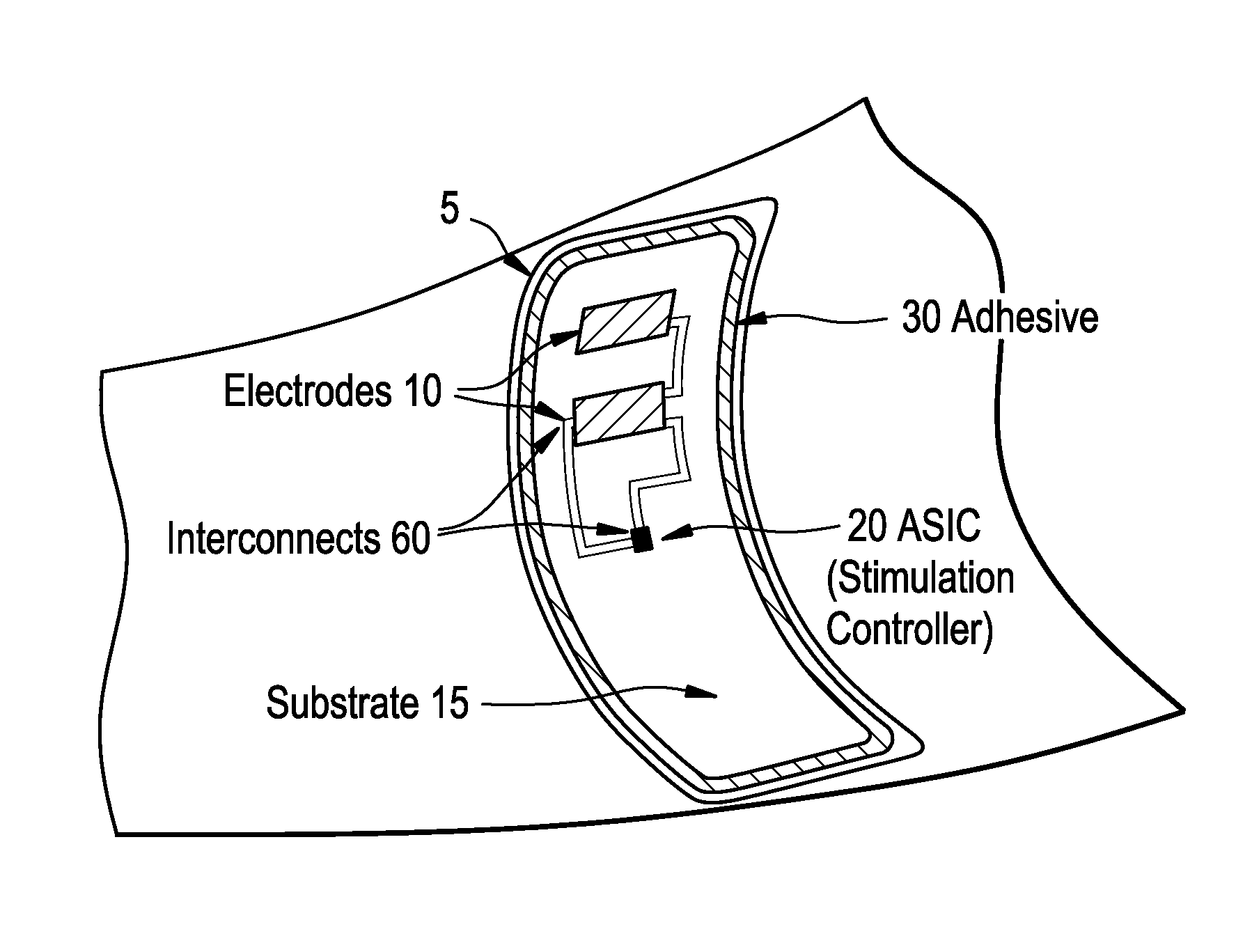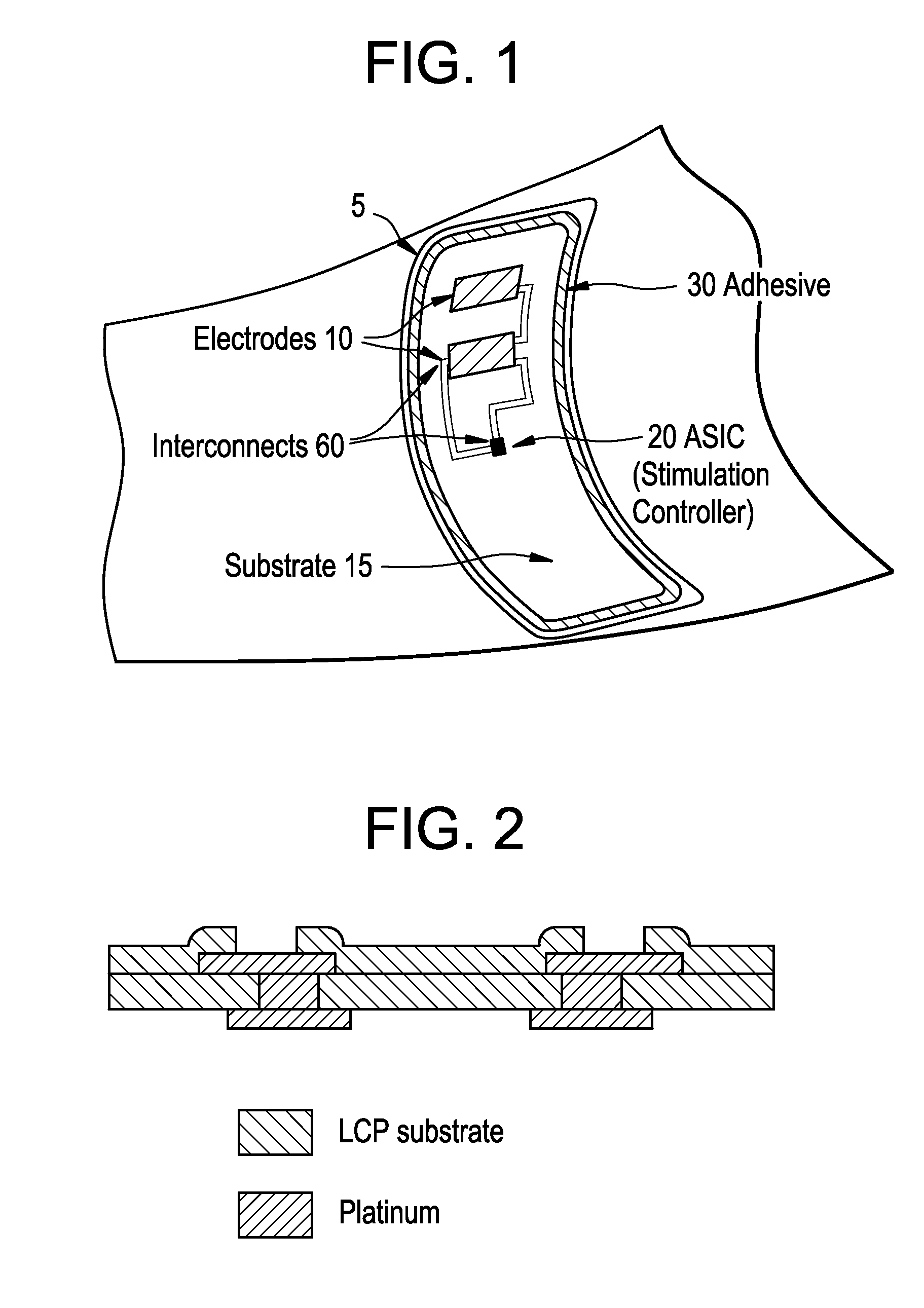Integrated surface stimulation device for pain management and wound therapy
a surface stimulation and wound therapy technology, applied in the field of medical devices, can solve the problems of chronic wounds, major clinical challenges, and inability to identify the optimal electrotherapy protocol, and achieve the effect of improving pain managemen
- Summary
- Abstract
- Description
- Claims
- Application Information
AI Technical Summary
Benefits of technology
Problems solved by technology
Method used
Image
Examples
Embodiment Construction
[0016]Before explaining at least one embodiment of the invention in detail, it is to be understood that the invention is not limited in this application to the details of construction and the arrangement of the components set forth in the following description or illustrated in the drawings. The invention is applicable to other embodiments of being practiced or carried out in various ways. Also, it is to be understood that the phraseology and terminology employed herein is for the purpose of description and should not be regarded as limiting.
[0017]At its broadest level, the present invention relates to a medical device for treatment of wounds or pain comprising at least one electrically powered patch comprising ISSD circuitry that includes interconnecting wires on a substrate layer; at least one stimulation controller, the stimulation controller being configured so as to provide variable stimulation patterns; at least one configuration of electrodes attached to the substrate layer a...
PUM
 Login to View More
Login to View More Abstract
Description
Claims
Application Information
 Login to View More
Login to View More - R&D
- Intellectual Property
- Life Sciences
- Materials
- Tech Scout
- Unparalleled Data Quality
- Higher Quality Content
- 60% Fewer Hallucinations
Browse by: Latest US Patents, China's latest patents, Technical Efficacy Thesaurus, Application Domain, Technology Topic, Popular Technical Reports.
© 2025 PatSnap. All rights reserved.Legal|Privacy policy|Modern Slavery Act Transparency Statement|Sitemap|About US| Contact US: help@patsnap.com



